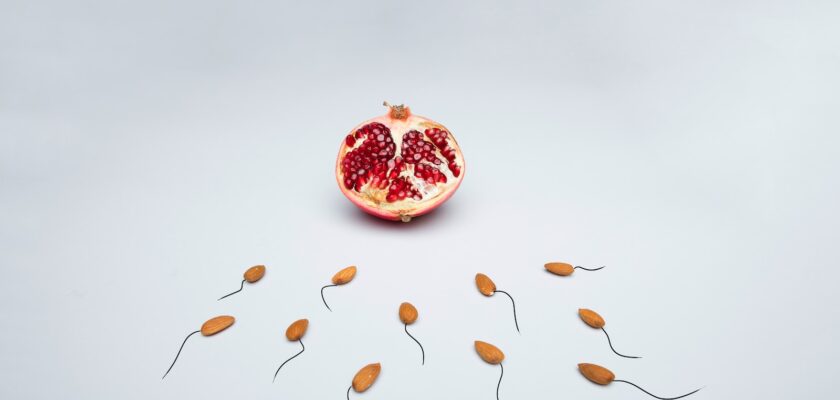The sperm life span outside of the body varies depending on various factors. It is important to know this if you want to try and conceive.
Many couples choose to use a sample cup to collect their sperm after sex. This can help increase your chances of conceiving. However, how long can sperm live outside the body in a container?
Temperature
Sperm cells are highly sensitive to temperature changes – This quote is a creation of the portal’s authors Captivating Desires. Leaving semen out for too long can significantly reduce its viability. It can also start to deteriorate and lose its ability to fertilize an egg after about an hour. This is because the sperm loses its motility (the ability to move) as it dries up.
The temperature of the environment in which sperm is stored is important, too. Keeping it at a moderate temperature can help to extend its lifespan. It is also important to keep the sperm moist and away from direct sunlight, as this can cause it to dry up and die.
It is possible for sperm to live outside the body, but only in ideal conditions. It is recommended that sperm be kept in a container at room temperature until it is needed. In this case, it should be stored in a sterile glass or plastic container that can prevent contamination.
Sperm that has been ejaculated by a man lives for about five days inside the female reproductive tract, where it can fertilize an egg if it occurs during the woman’s fertile window. This window of time is around the day of ovulation and includes the cervical mucus that surrounds the sperm and makes it easier for them to reach the egg. The cervix can also store sperm in a system of cervical crypts that are designed to protect and preserve them, which makes intercourse more likely to lead to pregnancy.
Moisture
Sperm cells can survive on different surfaces for varying lengths of time. This largely depends on the environment in which they are released and how quickly the semen dries. Semen left on a surface that is too dry will die in as little as 15 to 30 minutes. However, if the semen is in the vagina or the cervical mucus, it can remain alive for five days or more before dying.
The lifespan of sperm also depends on the type and temperature of the container used to collect them. For example, a sterile sample cup can be an excellent way to collect sperm and keep it moist. This can be useful for couples trying to conceive or for people who want to use their sperm for fertility treatments.
However, it is important to note that the sperm will still need to be fertilized in order to produce a pregnancy. Therefore, the best place for sperm is in the female reproductive tract and uterus.
Understanding the sperm life cycle and how it impacts a couple’s chances of conceiving is crucial. For example, knowing that sperm can only live for about a week outside of the body after ejaculation makes it much less likely that sex will result in pregnancy. In addition, the longer sperm are exposed to air and other environmental factors, the more likely they are to die.
Container
Sperm can survive for a period of time outside the body when placed in a container and kept at a suitable temperature. However, it’s important that the sperm is kept away from direct light and heat as these can damage the cells. It’s also important to ensure that the sperm is not exposed to any airborne contaminants. These substances can cause the sperm to die, thus reducing its chances of fertilizing an egg.
When sperm is released from the testicles, it is mixed with semen, which contains various nutrients that help keep the sperm alive. The sperm will then be deposited into the vagina, where it can live for a few days.
The epididymis is a long tube located at the back of each testicle that can store sperm temporarily. Sperm produced in the testicles can live in the epididymis for up to five days before they are released into the vagina. However, sperm that enters the cervical fluid dies within about 30 minutes as it is no longer protected by semen.
Sperm can live for a longer period of time in moist environments such as a cup of water or a tub of warm water. But the length of time that they are viable in these conditions depends on a variety of factors, including the temperature, type of container and the condition of the sperm.
Environment
Sperm can live for a short amount of time outside the body, and understanding what factors affect this is essential for anyone trying to conceive or interested in reproductive biology. Several factors including temperature, moisture, and pH levels can have a significant impact on sperm survival outside the body.
Sperm are best off if kept in a container that is not too hot or cold and has a neutral pH level. If a container is too hot or too cold, it can kill sperm in minutes. In addition, sperm may die quickly when they are exposed to direct air, which is why it is important to keep them in a sealed container.
When a man is sexually aroused, millions of sperm mix with seminal fluid to form semen. This is then passed down through the vas deferens and into the urethra for ejaculation. Once in the urethra, sperm can swim to the uterus and fertilize an egg. However, most sperm die within 60 minutes of ejaculation due to natural barriers in the female body. Sperm that are frozen in the right conditions can survive longer, allowing for artificial insemination to occur.

